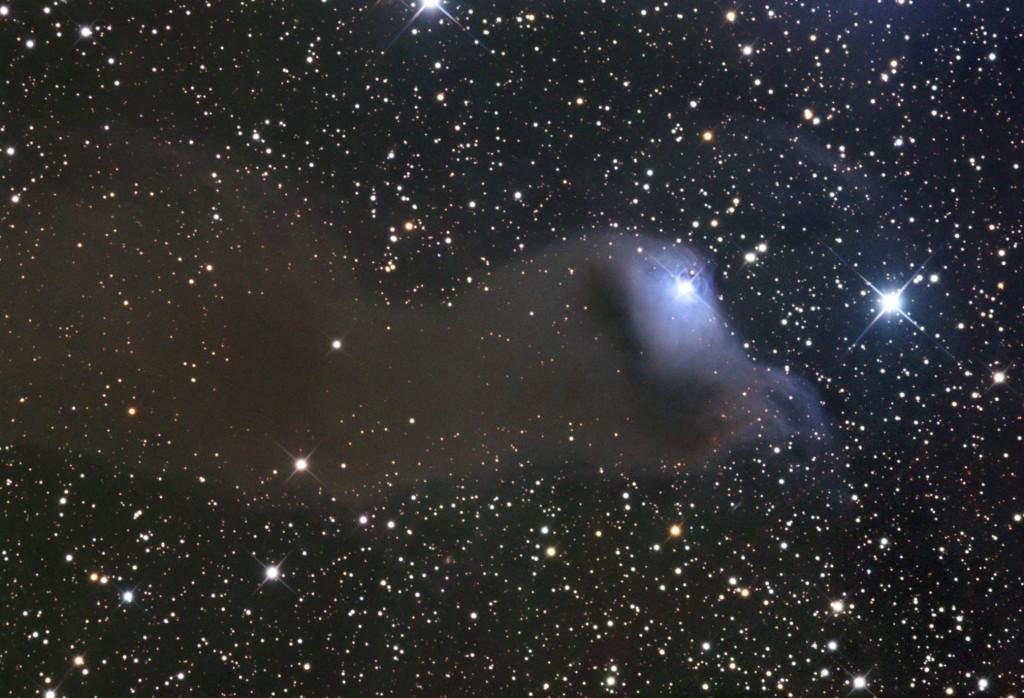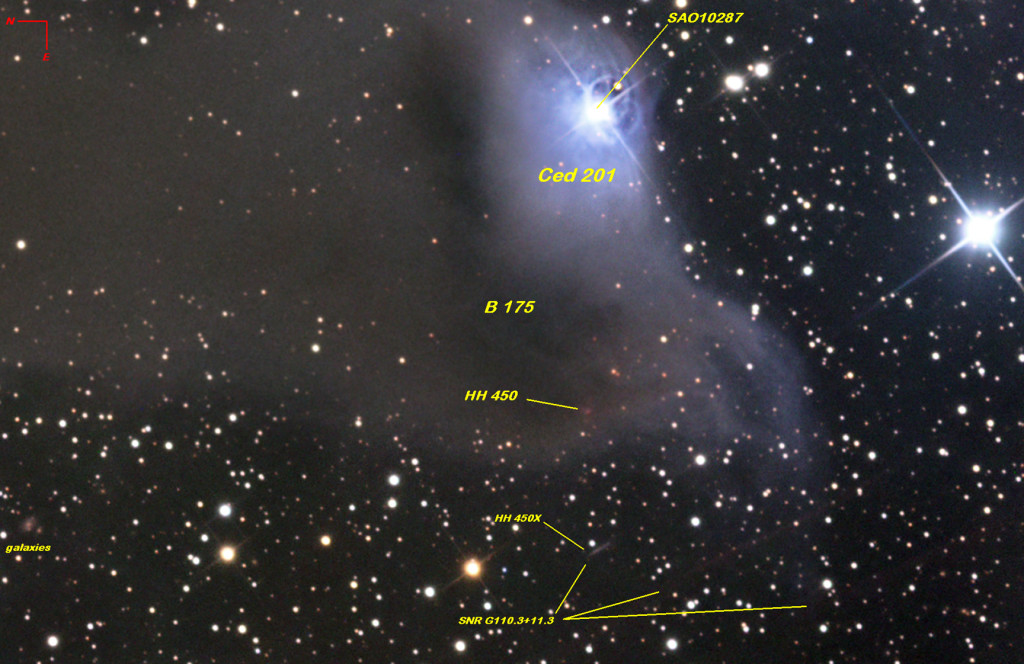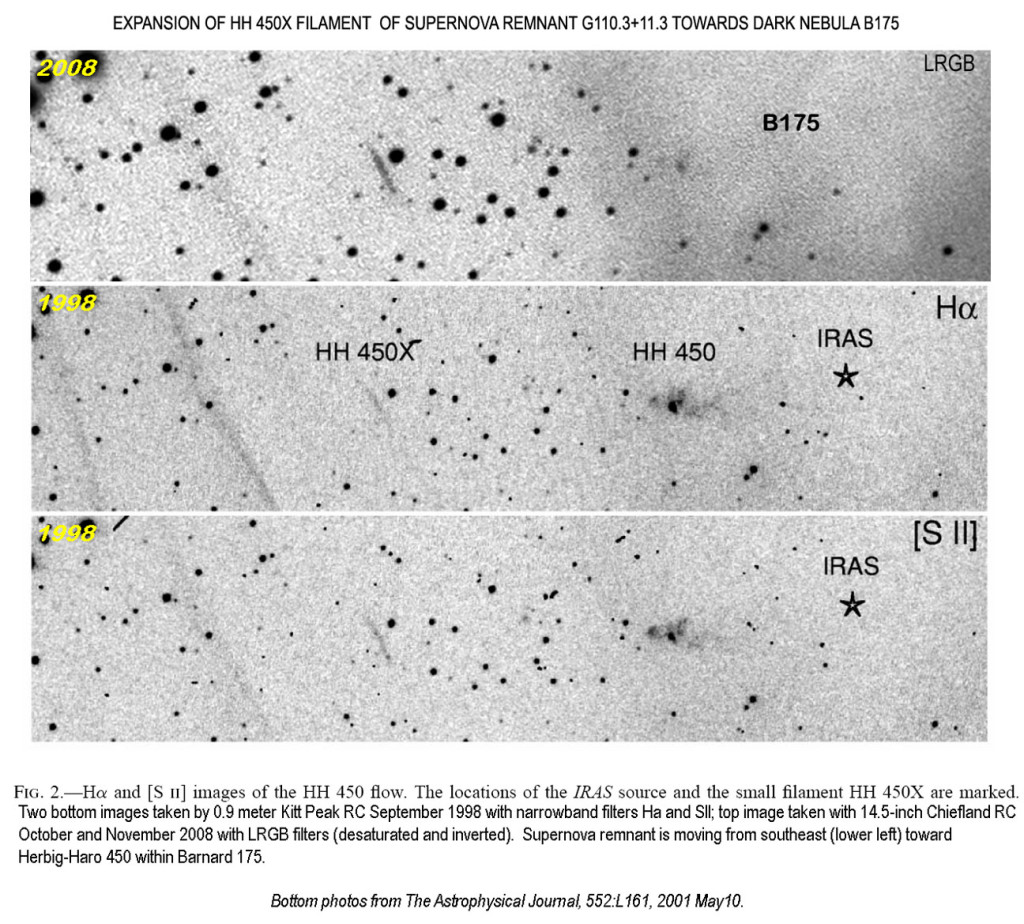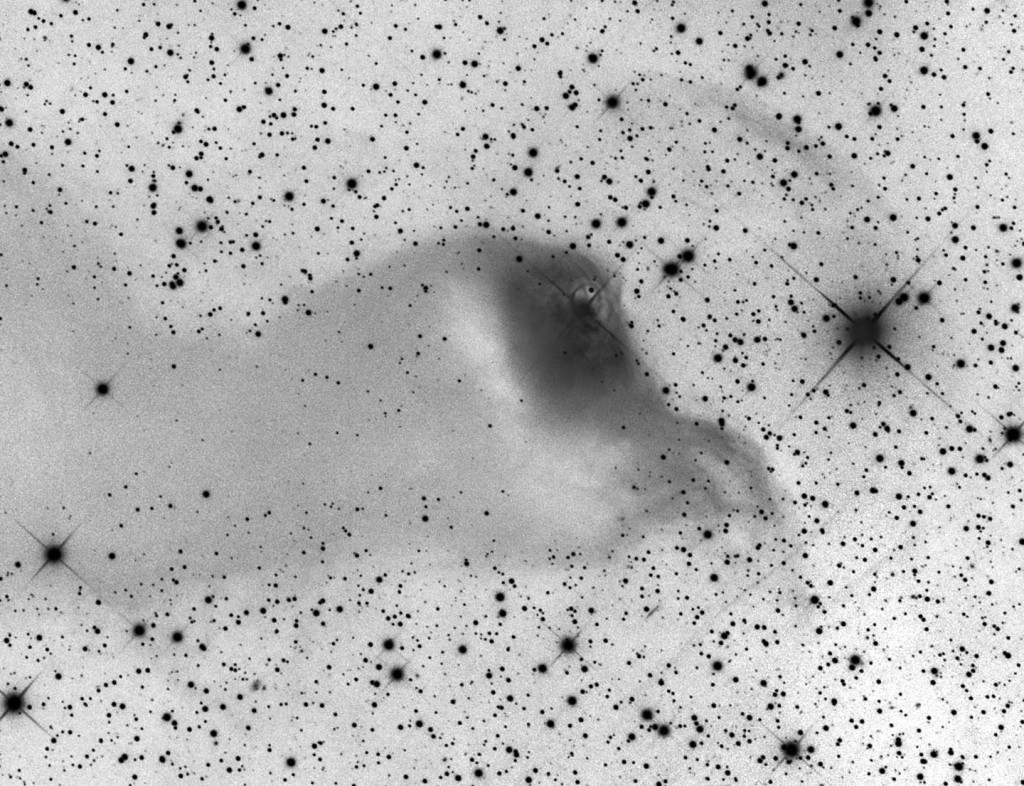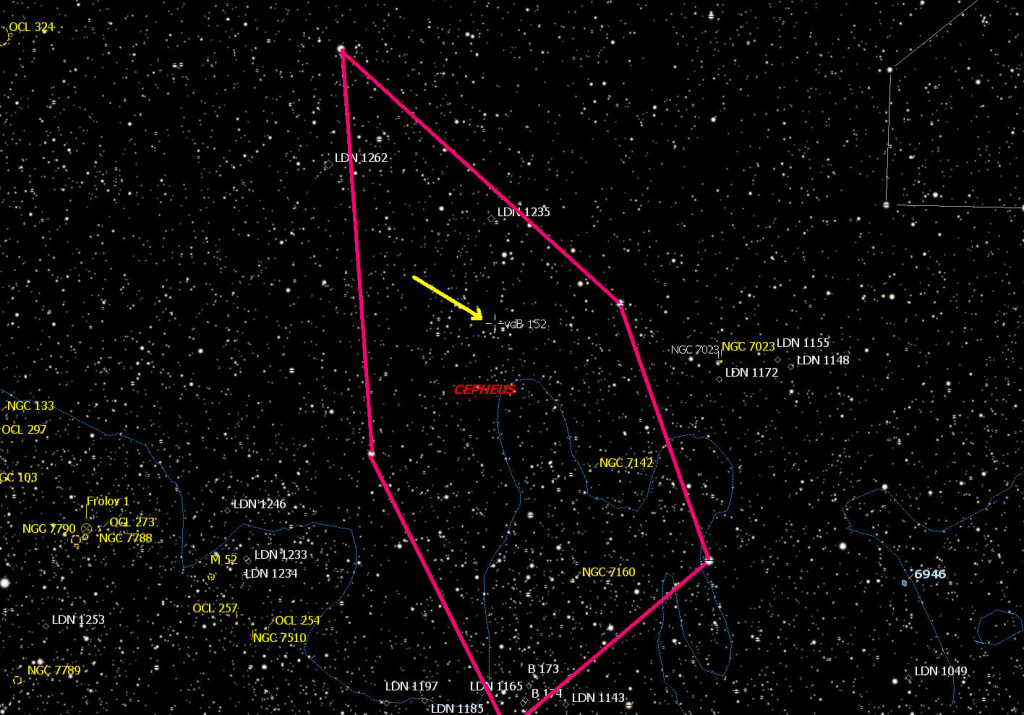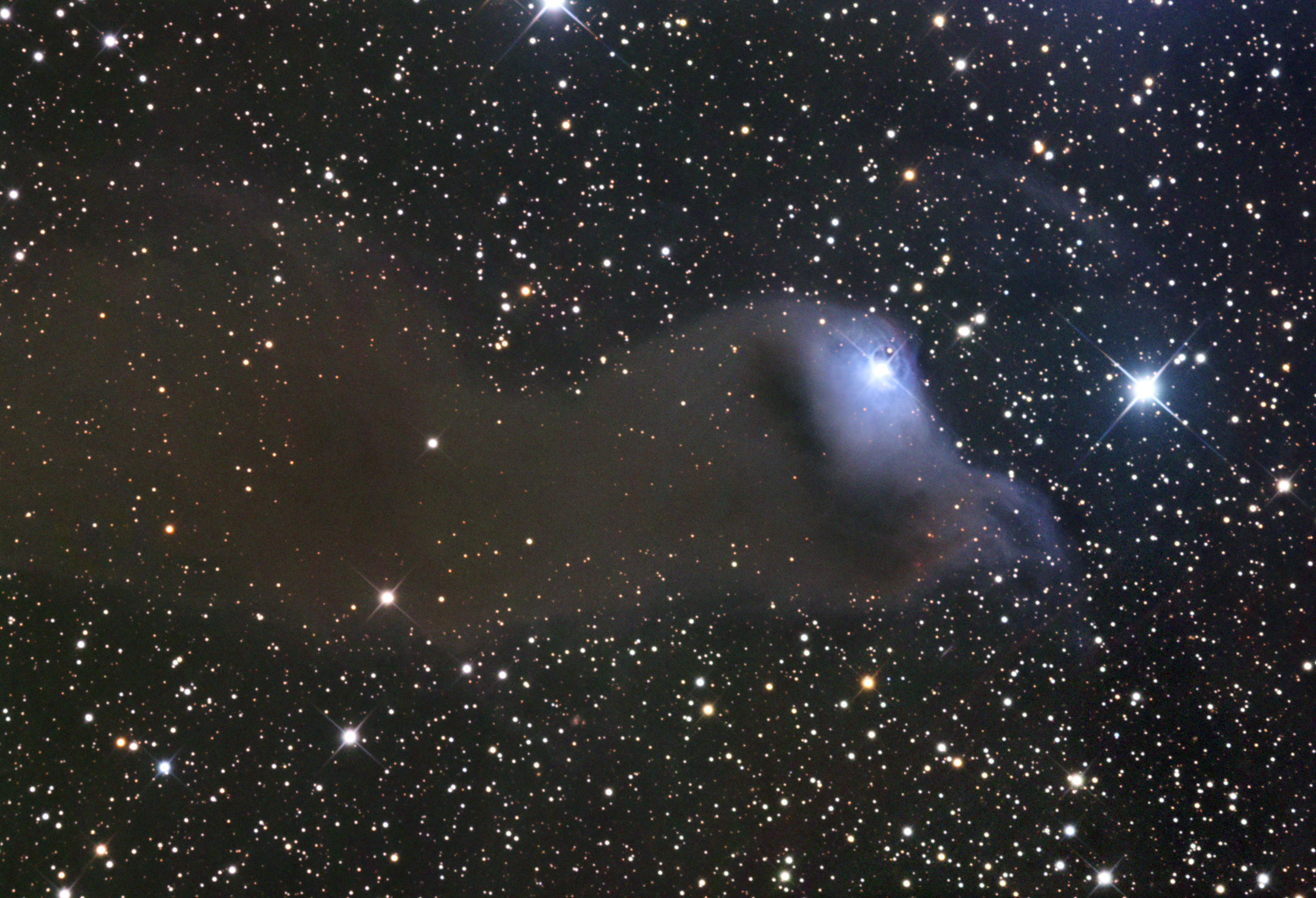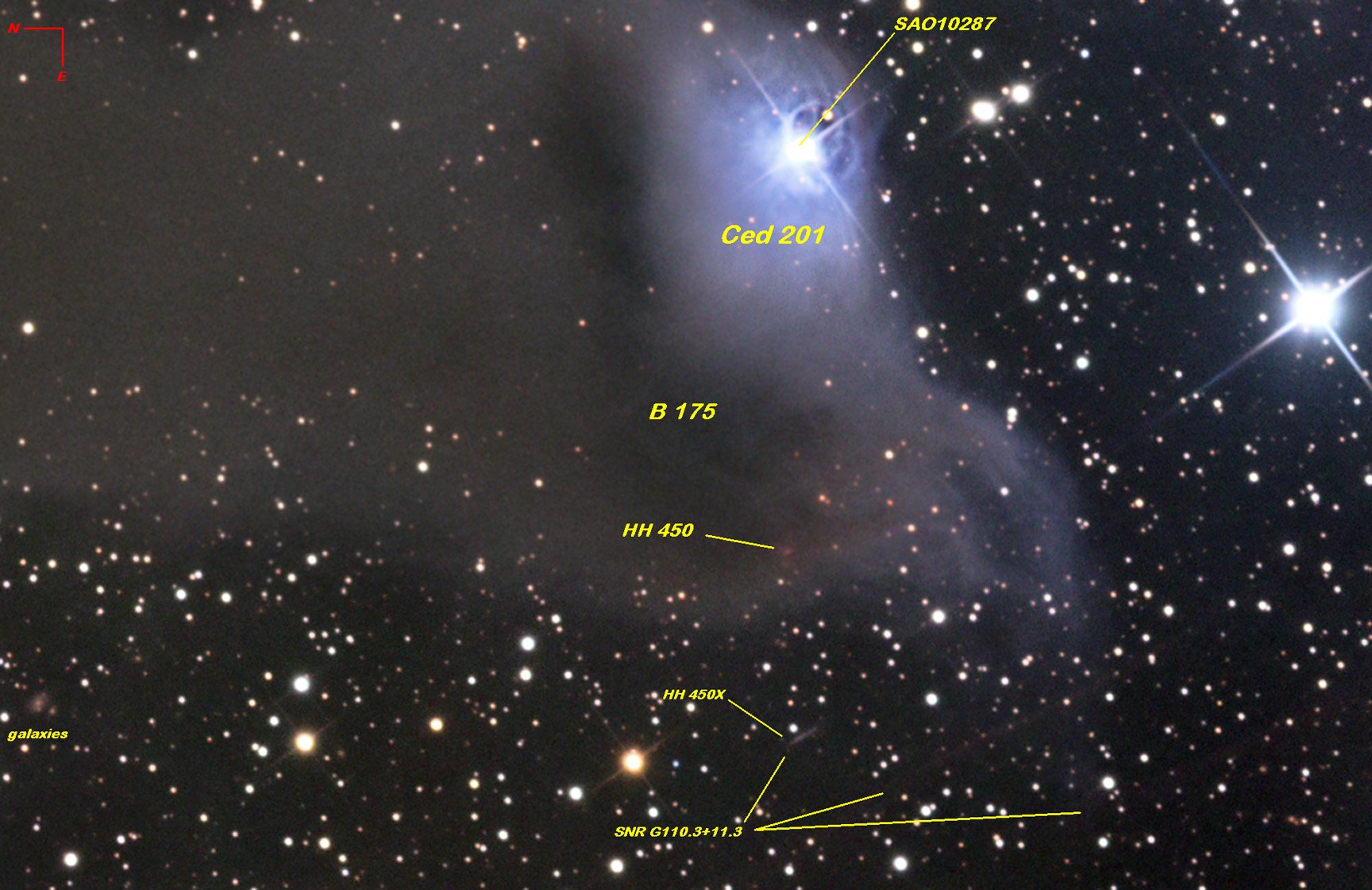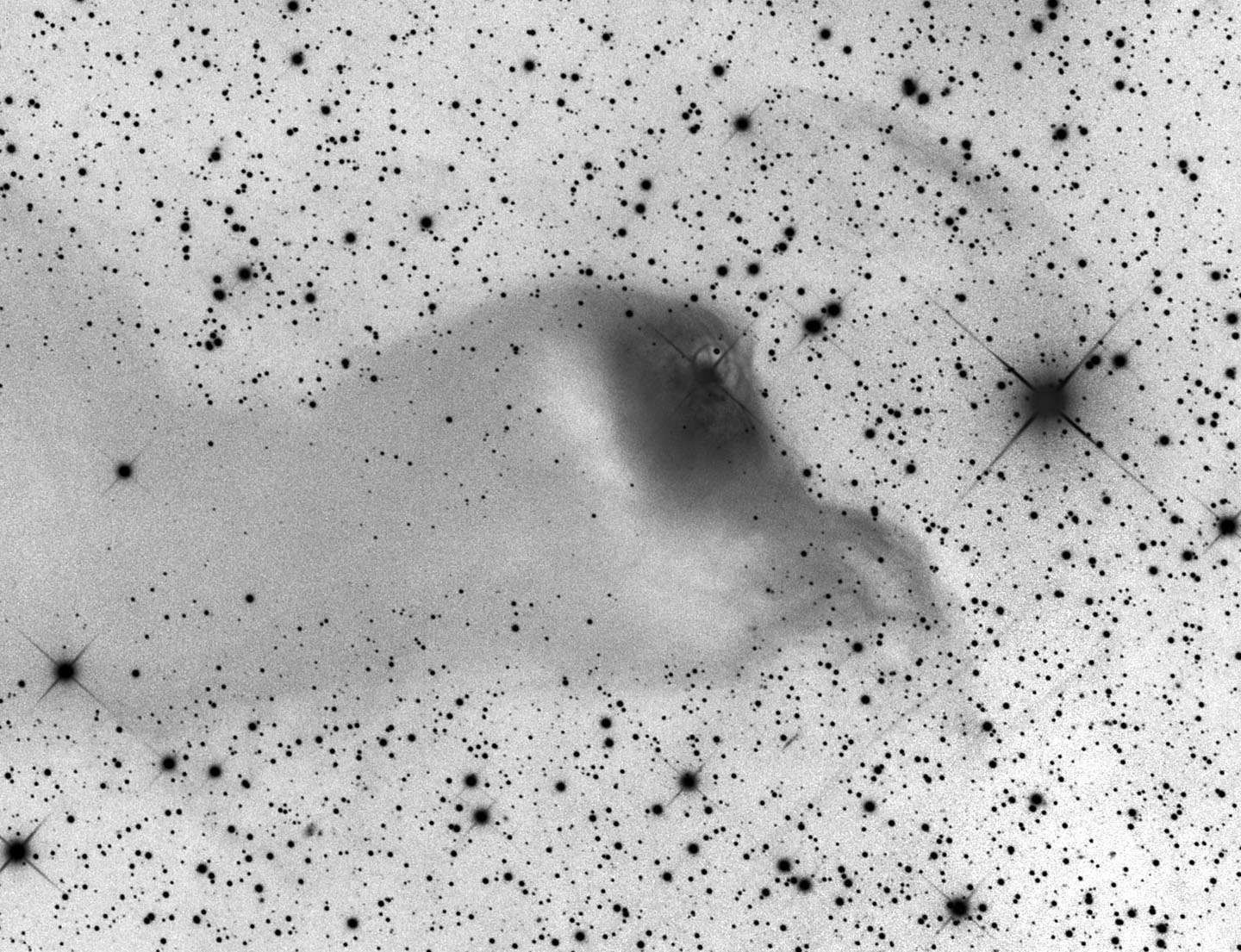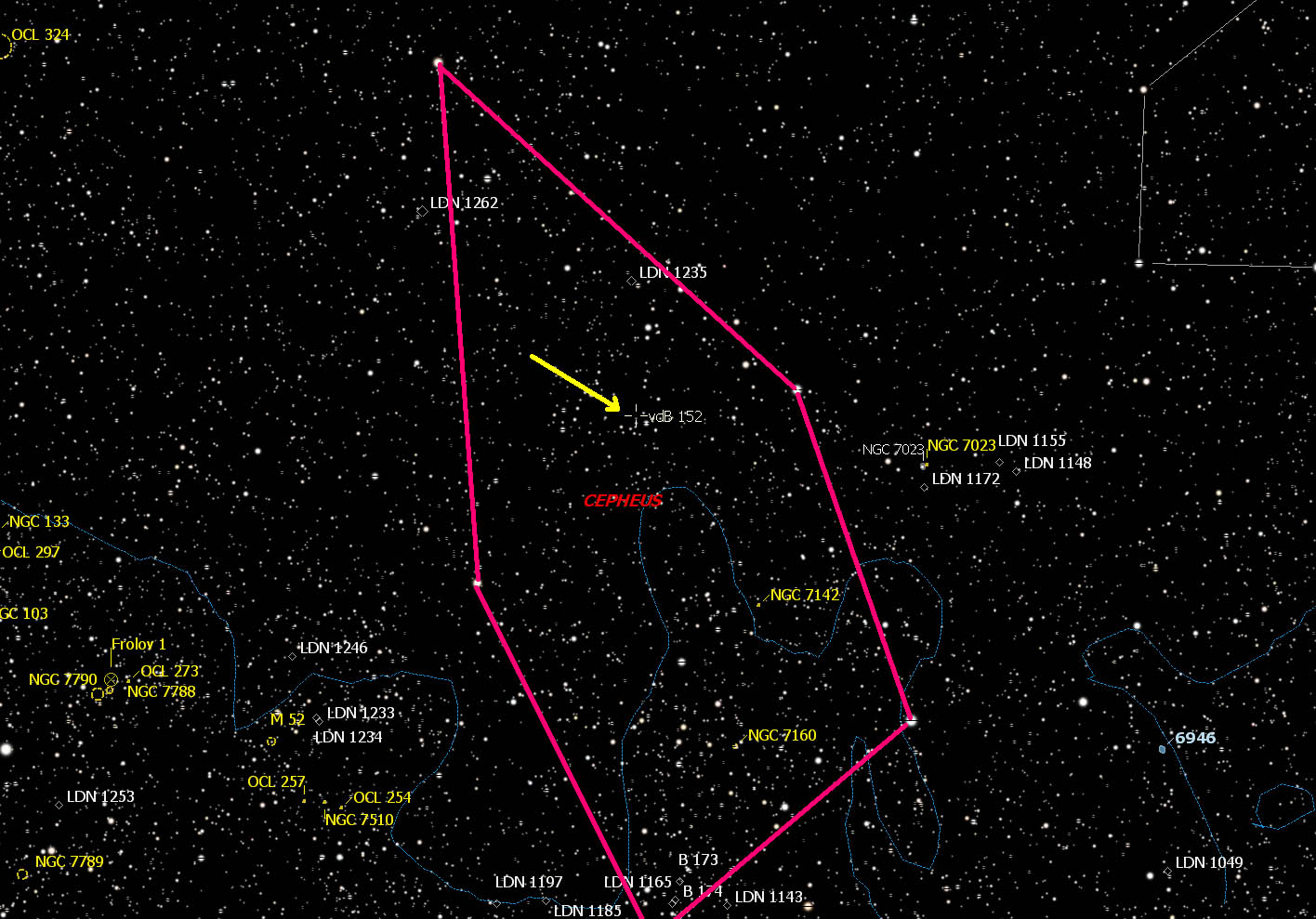In 2008 the observatory turned one year old and I can safely say that the Chiefland skies are more than adequate to do deep-sky CCD imaging both in terms of transparency and seeing on a regular basis. Unfortunately, I have recently turned to imaging right into the teeth of the Chiefland light dome. This is not by choice. I have just become more familiar with the riches of the dusty deep sky objects in the region called the Cepheus Flare, so named by Hubble almost 75 years ago. Hubble deduced that there must be dense dust clouds in this region because of the lack of galaxies despite being well out of our galactic plane. This Cepheus Flare, though faint, hides many secrets that amateur CCD’s are now unveiling. It took me seventeen hours of exposure at Halloween to reveal the “Goblins” around VDB 141. My Thanksgiving Chiefland challenge was to ferret a galaxy out of another picturesque region of the dusty Cepheus Flare.
I did ten hours of exposure on another Cepheus target, namely vdB 152, suggested by Steve Mandel and popularized by Russ Croman. The attached LRGB image shows 9th magnitude blue variable star SAO 10287 colliding with dark nebula Barnard 157 creating a blue reflection nebula (Cederblad 201) and a bubble around the star reminiscent of Thor’s Helmet in Canis Major. A large brown-olive dust column extends northward and is part of a large dust complex in Cepheus collectively called the Cepheus Flare ( link below for wide angle image by Tom Davis). I did find two faint galaxies side by side Arp-like in my image perhaps interacting and certainly anonymous. Close exam of my image shows another oblique white filament just a few minutes southeast of B175 appearing to be an edge-on galaxy. Longer fainter red streaks are seen even farther out from B175. Curious that this may be galactic cirrus or integrated flux, I searched the internet and found a fantastic article in The Astrophysical Journal 2001 named “When Star Birth Meets Star Death; A Shocking Encounter”. The author, Bally, describes all these streaks (including the bright galaxy-like one) and identifies them as supernova remnants (SNR) by spectroscopy.
Bally apparently discovered these filaments as SNR in 2001 and concludes that this object is at the same distance as the dark nebulae B157 and that they are starting to interact. The bright white filament that I thought was a galaxy Bally thinks is a portion of the SNR filaments that is closest to (and disproportionately interacting with) the outflow from a protostar Herbig-Haro object buried within B157 which has polar ejection jets. My attached close-up image of B157 indeed shows a red nebula on the southeast perimeter of B157 facing the apparently expanding SNR. This closest bright filament is by far the brightest on my LRGB image of all the filaments! Hence, the title of his paper “Star Birth (H-H protostar) Meets Star Death” (approaching exploded SNR filaments).
The above inverted mosaic shows the bright SNR filament named HH450X by Bally imaged by Kitt Peak in 1998 and by the Chiefland RC this fall. I cannot appreciate definite progression of this filament to the northwest in comparison to the ten year old Kitt Peak data but it seems to me to be considerably brighter (although Kitt Peak used narrowband filters). I will follow this interaction over the years for changes much as I will monitor Hubble’s Variable Nebula for structural changes and Barnard’s Star for proper motion. I would have been satisfied with just finding that tiny galaxy in the Cepheus Flare.
http://www.skyimager.com/imagedata/VDB152_08-12-08.html – fantastic wide angle image of Cepheus Flare
http://www.journals.uchicago.edu/doi/pdf/10.1086/320337 – Bally article on B157 and SNR.
“This enigmatic cloud of dust in the constellation of Cepheus has some interesting things going on in it. The blue patch at one end is caused by the dust reflecting the light of the bright bluish star entering the cloud, apparently as a chance encounter. The very dark area immediately to the left of this is a thick knot in the cloud which is dense enough to prevent any light from beyond from being seen. Further to the left the dust grows less dense, and we begin to see stars shining through, and the dust itself takes on a reddish, rusty color. This color is due to the fact that the the dust preferentially allows light of longer (i.e., redder) wavelengths through, while blocking light of shorter wavelengths. The source of this back lighting for the cloud is the overall light from our Milky Way galaxy.” (comment source: Dr. Adolph Witt – U. of Toledo)
Comments: Described as a “dusty curtain” or “ghostly apparition”, mysterious reflection nebula vdB 152 really is very faint. It lies about 1400 light-years away, along the northern Milky Way in the royal constellation Cepheus. Near the edge of a large molecular cloud, pockets of cosmic dust in the region block light from background stars or scatter light from the embedded bright star (top) giving parts of the nebula a characteristic blue color. Ultraviolet light from the star is also thought to cause a dim reddish luminescence in the nebular dust. Though stars do form in molecular clouds, this star seems to have only accidentally wandered into the area, as its measured velocity through interstellar space is very different from the cloud’s velocity (comment source: NASA APOD).
